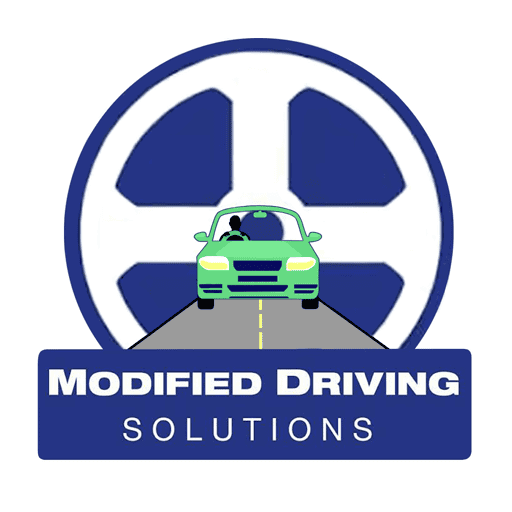Driving is an essential aspect of independence, providing the freedom to travel and engage with the community. However, for individuals with medical conditions or disabilities, driving can present unique challenges.
At Modified Driving, we offer specialised Occupational Therapy (OT) Driving Assessments tailored to ensure that individuals can drive safely and confidently. Our assessments are aligned with the National Disability Insurance Scheme (NDIS), enabling participants to utilise their funding for driving lessons and necessary vehicle modifications. Our goal is to help you navigate the road to independence while ensuring compliance with all safety and regulatory standards.
Do you need an OT driving assessment?
An occupational therapy (OT) driving assessment is required when someone has a medical diagnosis that potentially alters or influences their capacity to drive safely. In NSW, it is your responsibility to inform the RMS of any condition that may affect your driving ability.
However, it is also common for a person’s doctor or family member to inform the RMS of this, and doctors, driver trained occupational therapists, (or other health professionals) often make this decision on behalf of the person. Your doctor might submit the ‘fitness to drive’ form to the RMS, indicating the need for you to attend a driving assessment.
It is important to remember that driving is a big responsibility, and anything that may affect your driving will potentially place your safety and the safety of others at risk.
Some common medical conditions that usually require occupational therapy driving assessments include:
- Stroke
- Heart attack
- Brain injury
- Physical injuries
- Alzheimer’s disease
- Dementia
- Amputated limbs
- Cognitive conditions such as intellectual disability or Autism
- Spina bifida
- Cerebral palsy
- Epilepsy

I am an NDIS participant – can I drive?
The NDIS commenced full rollout in 2016 in NSW. Prior to the scheme, many people with disabilities did not attempt to drive as they were unable to afford driving lessons and/or the necessary vehicle modifications. Today, however, a person with an approved NDIS plan may utilise this funding to obtain their licence, as their funding may cover driving lessons and vehicle modifications.
For an individual who has not held a licence or driven before, the first step is to obtain your learner’s licence. You must declare your disability/medical condition to the RMS when you apply for the driver knowledge test. Once you pass the test and achieve your learner licence, you may then use your NDIS funding to pay for some driving lessons.
If you are already driving or have previously driven and recently been diagnosed with a medical condition affecting your driving, you will first need medical clearance from a treating medical practitioner to return to driving. You can then complete the OT driving assessment, using your NDIS funding to pay for the assessment and any modifications you may need.
What specific NDIS funding do I need?
For driving lessons and an OT driving assessment, you will need funding in the ‘CB daily activity‘ (Improved daily living) category of NDIS funding. For car modifications, funding is required in the ‘Assistive technology’ category. When you apply for NDIS funding, inform your planner/coordinator of your goals to drive.
How the OT driving assessment works
C class drivers
The purpose of the OT driving assessment is to determine if a person’s medical condition or disability is impacting on their driving performance, to ensure that they can drive safely and to RMS standards. The content below is applicable to C class vehicles, though it is a similar process for other licence types (e.g. trucks or commercial vehicles).
There are two parts of the assessment: the off-road section and the on-road component.
The off-road part involves the occupational therapist performing a visual, cognitive and physical assessment to assess if there are any significant deficits or issues that may influence your driving capacity. In the on-road portion, you will then drive a dual-controlled vehicle for 1 hour with a qualified driving instructor and OT.
The assessment is only focused on whether your medical condition is altering your functional capacity to operate the vehicle. Any minor errors you commit (that do not require physical intervention from the driving instructor) are generally overlooked. On the other hand, if you make a critical error (which requires the driving instructor to intervene, either by activating the emergency brake or taking control of the steering wheel), this results in an automatic ‘fail’ of the assessment.
The driving instructor will not physically intervene unless there is a danger of a collision or accident. Driving occupational therapists and the instructor will discuss with you the outcome of the on road assessment immediately afterwards, and the OT will complete the report and send it to the RMS, NDIS and your doctor.
Learner drivers
For learner drivers with no or limited previous driving experience, the assessment is more of a lesson, aimed to conclude your current level of driving so the OT can recommend a number of driving lessons you will need to progress to your provisional licence. As a learner driver, it is not possible to determine if your disability is affecting your driving at this stage, as you need more practice and driving experience. Your NDIS funding will usually cover a significant number of lessons, but you may have to pay for some lessons privately.
In general, the NDIS continues to support a person’s goal to drive if they are showing improvement in their driving skills. As such, it is common for people to have OT driving reassessments to determine if the NDIS will continue to fund driving lessons. If a person becomes stagnant with their driving or stops improving after a significant number of lessons (and is not ready to take the provisional driving on road test), the OT may make the decision to cancel the person’s licence.
Learner drivers with previous driving experience
For drivers with previous driving experience, the OT driving assessment is generally used to determine if they can safely return to driving (for instance, after a stroke or seizure) or to assess the need for vehicle modifications (e.g. if a stroke has affected functioning in a limb or if an amputation has occurred). If you need a modification, the OT will recommend lessons on how to use the modification independently (which may be funded by the NDIS). You will then be required to undergo the RMS disability test to ensure you can use the modification safely, and the vehicle modification may be funded by the NDIS. It is important to note that the NDIS has specific requirements regarding funding modifications (e.g. vehicle age). The NDIS will not fund the purchase of a vehicle.
Take Control of Your Independence with OT Driving Assessments
At Modified Driving, we are committed to supporting your journey towards safe and independent driving.
Our comprehensive OT Driving Assessments, in conjunction with NDIS funding, provide a clear pathway to obtaining or retaining your driver’s licence, tailored to your specific needs. With no waiting lists, competitive pricing, and personalised service that comes to you, we ensure a seamless and supportive experience.
Don’t let a medical condition or disability hold you back from the freedom and independence that driving offers.
Contact us to begin regaining your driving independence. Our friendly and professional team is here to answer any questions and guide you through the process. Reach out now to schedule your free consultation and begin your journey with confidence and peace of mind.


